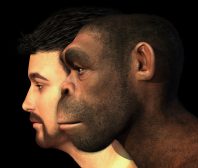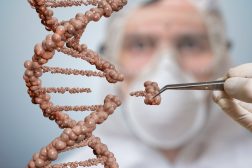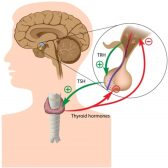Definition
noun, plural: Herring bodies
The neurosecretory terminal of the axons from the hypothalamus and located in the neurohypophysis, involved in the storage of neurohypophysial hormones
Supplement
A Herring body refers to any of the several neurosecretory bodies located in the posterior pituitary. The posterior pituitary (also referred to as neurohypophysis) is the part of the pituitary gland that is non-glandular and an extension of the hypothalamus as opposed to the anterior pituitary (also called adenohypophysis) that is glandular and comprised of various cells that produce and secrete hormones. The posterior pituitary does not produce hormones. Instead, the hypothalamus synthesizes hormones that are then released from the posterior pituitary. The posterior pituitary is an extension of the hypothalamus. The cells that produce neurohypophysial hormones (e.g. vasopressin and oxytocin) are located in the hypothalamus but their axons extend to the posterior pituitary.
Together with the pituicytes, the Herring bodies make up the pars nervosa of the posterior pituitary. The pars nervosa forms the bulk of the posterior pituitary and serves as the storage site for oxytocin and vasopressin. Pituicytes are specialized glial cells that are involved in the storage and the release of the neurohypophysial hormones from the posterior pituitary.
The Herring bodies are also involved in the temporary storage of neurohypohysial hormones. Oxytocin and ADH, though, are not stored simultaneously in the same Herring body. Apart from the hormone, other components include ATP and neurophysins (binding proteins). The neurophysin may either be neurophysin I or neurophysin II that binds to oxytocin or ADH, respectively. Neurophysin is bound to the hormone, forming a complex, and then stored as a single protein in the neurohypophysis.
The name, Herring bodies, is derived from Percy Theodore Herring, an English physiologist (1872-1967), who first described the structure in 1908.
See also:
- posterior pituitary
- pituitary gland
- hypothalamus
- pituicyte







